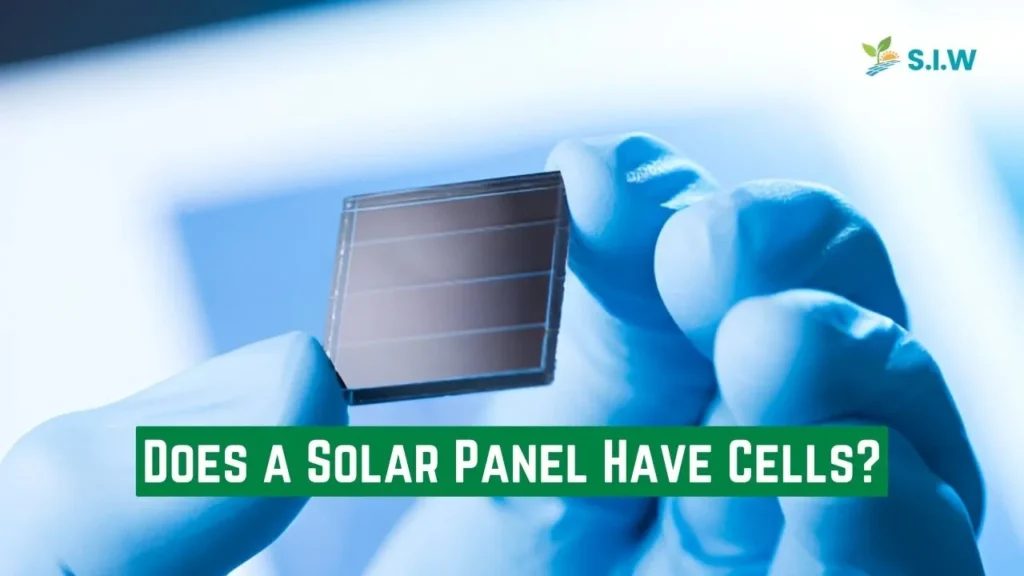Solar energy is a rapidly growing source of renewable energy, and understanding the basic components of a solar panel is essential. In this article, we dive deep into the structure of solar panels and answer the question: do solar panels have cells? Let’s explore how solar cells work and the crucial role they play in generating clean electricity.
What Are Solar Cells?
At the core of a solar panel lies the solar cell, which is responsible for converting sunlight into electricity. Solar cells are the fundamental building blocks of solar panels and are made from semiconductor materials, most commonly silicon. Each solar panel contains many solar cells, which are wired together to form a complete system capable of producing usable electrical energy.
Key Features of Solar Cells:
- Material: Usually silicon, either monocrystalline or polycrystalline.
- Efficiency: Solar cells convert sunlight into electricity through the photovoltaic effect.
- Size and Arrangement: A typical solar panel contains 60 to 72 solar cells.
How Do Solar Cells Work?
Solar cells operate based on the photovoltaic effect, a phenomenon where light particles (photons) strike a semiconductor material and knock electrons loose, creating an electric current. When multiple cells are combined in a panel, this current is collected and used to generate electricity.
Here’s a step-by-step breakdown of how solar cells generate electricity:
- Absorption of Light: Solar cells absorb photons from sunlight.
- Electron Excitation: The energy from photons excites electrons, causing them to break free from their atoms.
- Electric Field Creation: The structure of the solar cell creates an electric field that directs these free electrons in a particular direction.
- Current Flow: As electrons flow, they generate an electric current that can be captured and used as electricity.
Types of Solar Cells
1. Monocrystalline Solar Cells
These are made from a single continuous crystal structure, making them highly efficient and durable. Monocrystalline cells have a characteristic dark black color and are often used in high-performance solar panels.
2. Polycrystalline Solar Cells
Polycrystalline cells are made from silicon crystals that are melted together. They are less efficient than monocrystalline cells but are more affordable, making them a popular choice for residential installations.
3. Thin-Film Solar Cells
Thin-film solar cells use a very thin layer of semiconductor material. While they are less efficient than silicon-based cells, they are lightweight and flexible, which allows for unique applications, such as in solar shingles or portable solar products.
How Many Cells Does a Solar Panel Have?
The number of solar cells in a panel depends on the size and type of the panel. Standard residential solar panels usually contain either 60 or 72 cells. Some commercial panels may include up to 96 cells for greater power output.
- 60-cell solar panels: Common for residential use, producing around 250 to 300 watts.
- 72-cell solar panels: Larger panels often used for commercial applications, producing 350 to 400 watts.
- 96-cell solar panels: High-power panels used in large-scale installations.
What Is the Function of Solar Cells in a Solar Panel?
The function of solar cells within a solar panel is to capture and convert sunlight into usable electricity. Each cell contributes a small amount of electrical power, but when combined, they form a powerful energy-generating system. By linking multiple solar cells in series or parallel, solar panels produce a higher voltage and current, making them capable of powering homes, businesses, and even large-scale solar farms.
Factors That Affect Solar Cell Performance
1. Efficiency
Efficiency measures how much sunlight a solar cell can convert into usable electricity. Higher efficiency means more energy production. Monocrystalline cells, for instance, typically have higher efficiency than polycrystalline cells.
2. Temperature
While solar cells work best in sunlight, excessive heat can reduce their efficiency. Most solar panels are designed to operate within a specific temperature range to maximize their performance.
3. Shading
Shading can drastically reduce the output of a solar panel. If part of a solar panel is shaded, the affected solar cells will produce less power, which impacts the entire panel’s output.
Maintenance and Longevity of Solar Cells
Solar panels are designed to be durable and low-maintenance, typically lasting 25 to 30 years. The main factors that contribute to the longevity of solar cells include the quality of materials, environmental factors, and the installation process.
Common Maintenance Practices:
- Regular panels cleaning: Dust and debris can reduce efficiency, so panels should be cleaned periodically.
- Inspection for damage: Check for cracks or damage to the solar cells that could reduce output.
- Monitoring output: Ensure the system is generating electricity as expected by regularly checking energy production.
FAQs
1. What Are Solar Cells Made Of?
Solar cells are typically made from silicon, which is a semiconductor material. There are also other types of materials used in thin-film solar cells, such as cadmium telluride or copper indium gallium selenide.
2. How Many Cells Are in a Solar Panel?
A standard solar panel contains 60 to 72 cells, though larger panels may have up to 96 cells.
3. How Efficient Are Solar Cells?
The efficiency of solar cells varies depending on the material and technology used. Monocrystalline solar cells can achieve efficiencies of 20% or higher, while polycrystalline cells typically range from 15% to 18%.
4. Do Solar Cells Degrade Over Time?
Yes, solar cells experience gradual degradation over time, losing about 0.5% to 1% efficiency per year. However, they are still capable of producing electricity for several decades.
5. Can Solar Cells Work on Cloudy Days?
Yes, solar cells can still generate electricity on cloudy days, though their output will be lower compared to sunny days.








